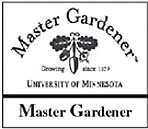April 8, 2004 at 11:04 a.m.
It’s been a long winter and gardeners are anxious to get going on something. Lawns are not the first place to start because if you start working the lawn too early, you can do more harm than good. Start by sweeping and raking as much sand off your driveway or boulevard as possible. Salt and sand combinations can wreak havoc with grass.
Rake through patches of matted grass, especially if they look moldy or webby. Raking with a light-weight rake usually allows enough air and sunlight to reach grass crowns so they will start growing with little or no ill effects from snow mold.
The best time to seed a lawn or to patch a lawn is mid-August to mid-September. The reason being is that the temperature is starting to cool down rather than heat up. Another reason is there is less competition with weeds in the fall than in the spring. If you must seed in the spring, wait until the soil temperature is favorable for better seed germination.
Pruning of fruit trees should have been completed by the first week in April. This gives the tree wounds time to heal before the disease season arrives. Don’t worry about pruning paint or sealing the wounds. The latest research indicates that pruning wounds heal faster if the air does it rather than taking the chance of trapping disease inside a sealed wound.
Avoid pruning or wounding oak trees for the next several months to help protect them from oak wilt disease. Waiting until winter is the best time when the trees are bare and dormant. Since oak wilt can also spread through the roots, avoid any digging that could injure them.
Remove tree wrap from the trunks of young, thin barked trees as soon as temperatures are consistently mild. Keeping them wrapped too late in the season will trap moisture against the bark, often causing mold and damage.
As soon as the snow had melted down, I cut down the old asparagus ferns and destroyed them. Waiting to cut them in the spring helps trap the snow. If it gets dry later this spring, the trapped moisture may help the asparagus crop.
Someone asked me when is a good time to uncover strawberry plants? Again, there is no hurry. I don’t uncover them until I have to. I realize that if it gets hot, I need to so they won’t be smothered. However, if I can delay the growth, I can also delay the blooming. This can be important if we get a late spring frost just about the time my berries are in full bloom. I tend to think that many strawberry growers are like me, having a small patch for their own use.
Many years ago I was in San Francisco in late April attending a national school board convention. One night I was back in the hotel watching the national news. They were talking about the weather back in Minnesota which was hot and dry. This was a dry spring where there were a number of grass and brush fires. The commentator was comparing the fires with the Hinckley fire back at the turn of the century. When they mentioned the temperature back in the Twin Cities was 99 degrees, I started to worry about my strawberries back home, which were still uncovered. I barely returned home before I was out removing the straw. My plants looked like they had gone through a grass fire of their own, but after a nice spring rain and some warm weather; I had my best strawberry crop ever.
Prune shrubs grown for their foliage such as alpine currants, dogwood, arctic willows, etc., once buds swell. Wait to prune shrubs with showy flowers such as lilacs, azaleas, and forsythias until they are through blooming. Pruning now removes flower buds.
If you buy or receive an Easter lily, remove the pollen-bearing stamens as they will stain skin or clothing if you brush against them. Nip off entire flowers as they fade, then keep the plant growing in a sunny window until it’s warm enough to plant it outdoors.
There are still a limited amount of raspberry, blueberry and grape plants available to order. Many of these are cultivars developed at the University of Minnesota and used by commercial growers, but hard to find for home use. You can view the plant order form on the web at: http://www.extension.umn.edu/coun ty/Chisago. Click on ‘fruit plant order form’ in the Hot Topics box. Call the Extension Office at 651-237-3057 to check on availability.




Comments:
Commenting has been disabled for this item.